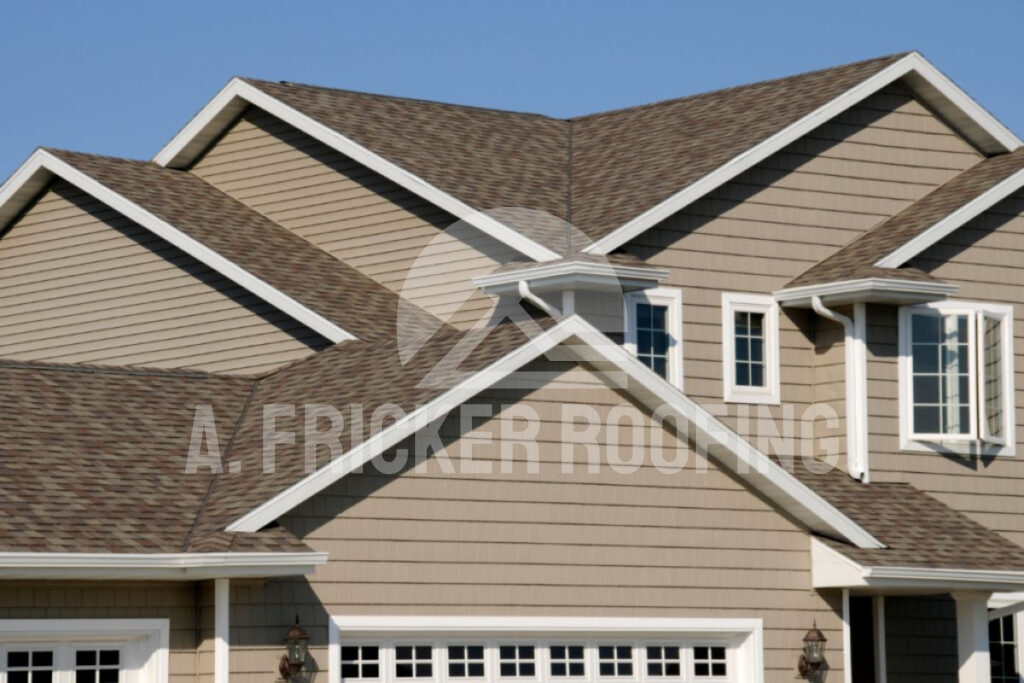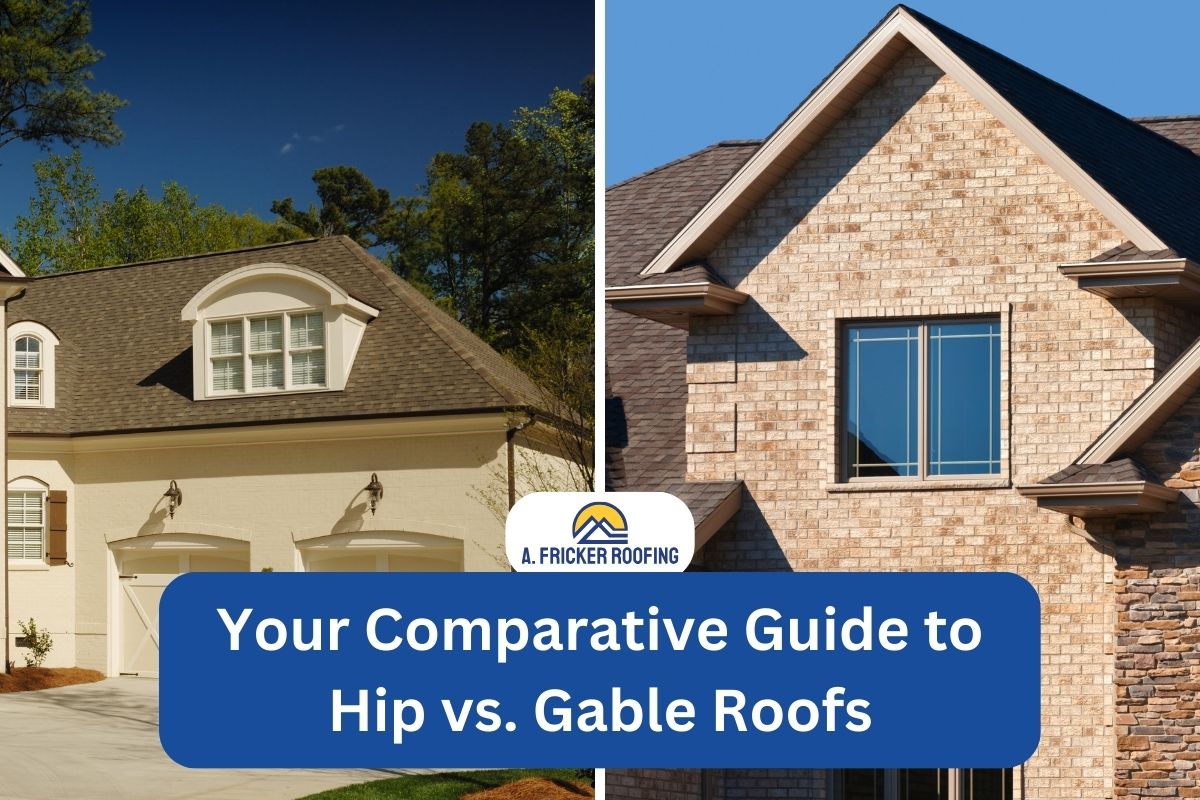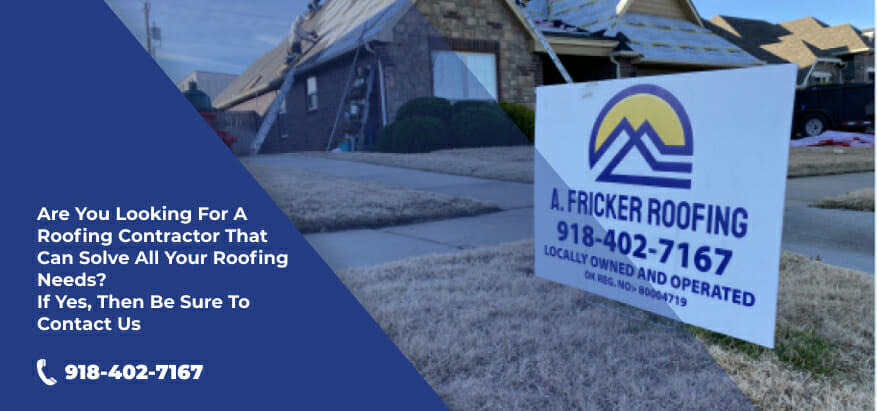Today, we will talk about the differences between hip vs. gable roofs. Hip roofs and gable roofs, the most commonly found roof types in the United States, are different in many ways including architectural structure, durability, energy efficiency, wind-resistance, style, and aesthetic appeal.
If you are considering the new roof installation and are confused between hip vs. gable roofs, this blog post is for you. In this guide, we will directly compare the two so you can make an informed decision for your home.
What are Gable Roofs?

Gable roofs are pretty common in the U.S., in fact, you might be familiar with them. Gable roofs are among the simplest roof designs, and have two opposite sloping sides. This architectural structure looks like the capital ‘A,’ or inverted ‘V,’ with two flat gable ends. The two sloping roof planes of a gable roof meet at the top to form a roof ridge. This sleek roof ridge formed on the top contributes to the overall aesthetic appeal of the entire roof.
Being the most straightforward and cost-effective roofing system, these roofs can be found on the majority of homes in Oklahoma. Gable roofs also provide a significant attic space that can be used as a living space. All in all, gable roofs are the complete package that can provide effective ventilation, increased energy efficiency, and the ultimate protection against harsh weather conditions.
What is a Hip Roof?

Unlike gable roofs, hip roofs or hipped roofs have no vertical gable ends, as they have four sloping sides forming a peak or a ridge on the top. If the base of the architectural structure is square, a single point is formed at the peak, while on a rectangular structure, a ridge that goes along the roof’s peak is formed. Though hip roofs aren’t as popular as gable roofs in residential buildings because of their high installation costs, they are commonly installed on churches and hotels. Despite being more expensive initially, many homeowners in coastal regions install hip roofs for their sturdy base and ability to withstand high winds and intense storms. In fact, hip roofs are quite popular for this reason alone: they have high resilience against winds and storms. So, if you also live in an area with severe weather, hip roofs may be a great option for your home.
The Architectural Variations of Gable Roofs
Apart from the standard gable roofs, some of their variations can also be seen in residential and commercial buildings.
1. Front Gable Roof
The front gable roof adds a focal point above the entrance to your home, placing the gable at the front of the building. This variation offers an aesthetically pleasing and symmetrical look frequently found in colonial and Cape Cod-style homes.
2. Cross-Gable Roof
Introducing additional ridges and gables, the cross-gable roof creates distinct sections on the same structure. Common in larger homes, this variation of gable roof contributes to a more intricate and visually appealing roofline.
3. Side Gable Roof
This variation of the gable roof, as its name suggests, features the gable on one side of the building. The design creates a clean and straightforward profile, adding to the overall aesthetics of the building.
4. Dutch Gable Roof
Combining elements of gable and hip roofs, the Dutch gable roof includes a gable with a small hip at the top. This not only enhances aesthetics but also provides additional stability and is often seen in European and colonial architecture.
5. Saltbox Roof
The saltbox roof is a distinctive variation, characterized by a long, sloping plane on one side and a short, steep slope one the other. This asymmetrical design resembles an old-fashioned salt container, contributing to a unique and charming architectural aesthetic.
The Architectural Variations of Hip Roofs
Over time, hip roofs have evolved to compliment every architectural design. Some of their variations are:
1. Cross-Hipped Roof
Cross-hipped roofs, one of the variations of hip roofs, introduce additional ridges and surfaces by extending the roof. This variation is often employed in structures with wings or multiple sections, creating distinct hip sections that result in a more complex roof structure.
2. Mansard Hip Roof
The mansard hip roof, popular in farmhouses, is characterized by a double slope on each side. This design allows for additional living or storage space in the attic, making it a popular choice for historic and French-inspired architecture.
3. Pyramid Hip Roof
The pyramid hip roof takes the concept of a simple hip roof literally, forming a true pyramid shape. This variation is visually striking and provides enhanced stability, making it suitable for both residential and commercial structures.
4. Hip and Valley Roof
The hip and valley roof combines gable ends with the characteristic slopes of a hip roof. This variation provides a pleasing aesthetic while maintaining the stability and durability of a traditional hip roof.
Advantages of Gable Roofs
The following key points are just some of the reasons homeowners choose to install gable roofs:
- As also mentioned above, gable roofs are known for their simplicity and cost-effective construction compared to more complex roof designs.
- The triangular shape of a gable roof allows for efficient natural ventilation. The flat ends often include gable vents, helping to regulate temperatures within the attic space and the entire structure. This can be particularly beneficial in warmer climates.
- Gable roofs create ample attic space due to their design. The steep slopes provide more headroom and usable space compared to other roof styles.
- The steep slopes of gable roofs promote rapid shedding of water and snow. This helps prevent the accumulation of excess weight on the roof, reducing the risk of structural damage and leaks.
Disadvantages of Gable Roofs
Despite the cost effectiveness and design benefits of gable roofs, they do have some drawbacks:
- Gable roofs are also known for their wind vulnerability. They can be more susceptible to wind damage, especially during severe storms or hurricanes.
- In regions with heavy snowfall, gable roofs may accumulate snow. The steep pitch aids in shedding snow, but in extreme conditions, the weight can still pose a risk, potentially leading to structural issues.
Advantages of Hip Roofs
Along with their elegant style and durability, hip roofs come with numerous benefits. Some of these are:
- One of the significant advantages of hip roofs is their resistance to uplift during high winds and intense storms, making them a robust choice for areas with extreme weather.
- The design of hip roofs sheds water and snow effectively, reducing the risk of leaks and water damage. This ability makes them resilient and, ultimately, increases their lifespan and durability.
- Along with their durability and wind-resistance, hip roofs offer a timeless and elegant appearance, adding a touch of sophistication to any structure.
Disadvantages of Hip Roofs
Like gable and any other type of roof, hip roofs also come with their own disadvantages.
- The construction of hip roofs can be more complex compared to simpler roof designs like gable roofs. This can be a disadvantage for homeowners with limited space to work with.
- While some hip roofs provide a more extensive attic space compared to gable roofs, the inward slope limits the usable area. This might be a consideration for homeowners thinking of maximizing attic space for storage or additional living areas.
- The increased complexity and larger surface area of hip roofs may result in higher initial construction costs compared to simpler roof designs. Homeowners should weigh this factor against the benefits offered by the hip roof.
The Cost of Installing Hip vs. Gable Roofs
The cost of hip roof and gable roof installation depends on factors such as the roof size, the roofing materials, the complexity of the design and framing, and labor costs. However, according to Today’s Homeowner, a hip roof may cost about $20,000 to $60,000 including labor costs and all the materials.
On the other hand, the average cost of a gable roof typically ranges from $4 to $6 per square foot, or around $13,000 to $48,000 for both labor and materials.
Which One Is Better For You?
Since both roof types come with their unique design and advantages, deciding between hip roofs and gable roofs can be confusing. Therefore, it is better to consult a professional roofer for your specific needs.
For homeowners tight on budget, gable roofs prove to be an incredible and aesthetically pleasing option. However, for homeowners seeking durability, wind-resistance, enhanced protection, and an enticing look, hip roofs are the right choice. Though gable roofs are most commonly installed in residential settings, choosing between hip roofs and gable roofs depends on the homeowner’s preference, budget, and specific roofing needs. If you are unsure which roof type is right for you, our experts are here to help.
Contact A. Fricker Roofing and Waterproofing In Tulsa, OK, For Your Roof Installation
If you are thinking of installing a new roof but are confused between hip vs. gable roofs, then the professional roofers at our company can help. A. Fricker Roofing and Waterproofing in Tulsa, OK, is a leading roofing company serving residential and commercial property owners with trusted and reliable services. Whether you need a new roof installation or a complete roof replacement, we are always here to assist you.
Schedule a free roof inspection with our professional roofers and make an informed decision based on your home’s specific needs. Contact us today at (918) 402-7167!

